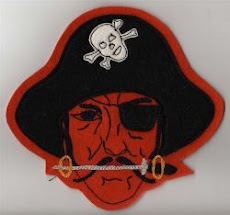6

Kansas was admitted to Statehood
January 29, 1861
Kansas was the 34th State to enter the Union
as a Free State
The Great Seal of the State of Kansas was established by a joint resolution adopted by the Kansas Legislature May 25, 1861.
The seal is described in the resolution as follows:
"The east is represented by a rising sun, in the right-hand corner of the seal;
to the left of it, commerce is represented by a river and a steamboat;
in the foreground, agriculture is represented as the basis of the future prosperity of the state, by a settler's cabin and a man plowing with a pair of horses;
beyond this is a train of ox-wagons, going west; in the background is seen a herd of buffalo, retreating, pursued by two Indians, on horseback;
around the top is the motto, 'Ad astra per aspera,' and beneath a cluster of thirty-four stars.
The circle is surrounded by the words, 'Great seal of the state of Kansas. January 29, 1861.'
" The motto, "Ad astra per aspera," means "To the stars through difficulties,"
and was adopted as part of the Great Seal of the State of Kansas.

The Nickname for Kansas is: The Sunflower State
 On a navy blue field is a sunflower, the state flower.
On a navy blue field is a sunflower, the state flower. Also, the state seal and the words "Kansas".
In the picture of the state seal are thirty-four stars representing the order of statehood.
Above the stars is the motto "To the Stars Through Difficulties".
On the seal a sunrise overshadows a farmer plowing a field near his log cabin, a steamboat sailing the Kansas River, a wagontrain heading west and Native Americans hunting bison.
The flag was adopted in 1927.
To listen to the State Song
click here
http://mclib.elkhart.com/Kansas.htm
We are very proud of this link from our
Morton County Library - Elkhart, KS
(Elkhart was our home for 32 years.)
For more about Kansas - Click on this link and Scroll down a ways.
Famous Kansans
Roscoe Fatty Arbuckle actor, Smith Center
Clarence D. Batchelor political cartoonist, Osage City
Gwendolyn Brooks poet, Topeka
Walter P. Chrysler auto manufacturer, Wamego
Clark M. Clifford secretary of defense, Fort Scott
John Steuart Curry painter, Dunavant
Bob Dole politician, Russell
Amelia Earhart aviator, Atchison
Milton S. Eisenhower educator, Abilene
Carl A. Hatch politician, Kirwin
Dennis Hopper actor, Dodge City
William Inge playwright, Independence
Walter Johnson baseball pitcher, Humboldt
Buster Keaton comedian, Piqua
Emmett Kelly clown, Sedan
Stan Kenton jazz musician, Wichita
Harold Lloyd actor, Burchard
Edgar Lee Masters poet, Garnett
Hattie McDaniel actress, Wichita
William C. Menninger psychiatrist, Topeka
Gordon Parks film director, Fort Scott
Zasu Pitts actress, Parsons
Charles Buddy Rogers actor, Olathe
Damon Runyon journalist, Manhattan
Barry Sanders football player, Wichita
Eugene W. Smith photojournalist, Wichita
William E. Stafford poet, Hutchinson
John Cameron Swayze news commentator, Atchison
Vivan Vance actress, Cherryvale
William Allen White journalist, Emporia
Charles E. Whittaker jurist, Troy
Vivan Vance actress, Cherryvale
William Allen White journalist, Emporia
Charles E. Whittaker jurist, Troy
6
This list leaves off Clint Boyers, Emporia
Probably other recent ones also.
Probably other recent ones also.
6
Norma commented that "it was interesting that Dwight Eisenhowers name was not on the list." I had noticed it later in the day, but neglected to go back and add it.
I can not understand why a list like that would not have Dwight D. Eisenhower. Thanks Norma for reminding me.
6
Here is a History Lesson in a Nut Shell
Click on each link
6
6
Dwight D. Eisenhower
6
6
Dwight Eisenhower's family settled in Abilene, Kansas in 1892. His father David Eisenhower was a college-educated engineer. Dwight Eisenhower graduated from Abilene High School in 1909
Dwight David "Ike" Eisenhower (October 14, 1890 – March 28, 1969) was the 34th President of the United States from 1953 until 1961 and a five-star general in the United States Army. During the Second World War, he served as Supreme Commander of the Allied forces in Europe, with responsibility for planning and supervising the successful invasion of France and Germany in 1944–45. In 1951, he became the first supreme commander of NATO.[
As President, he oversaw the cease-fire of the Korean War, kept up the pressure on the Soviet Union during the Cold War, made nuclear weapons a higher defense priority, launched the Space Race, enlarged the Social Security program, and began the Interstate Highway System. Eisenhower also was highly involved in the 1953 Iranian coup d'état, the overthrow of Prime Minister of Iran Mohammad Mossadegh and replacing him with the pro-Western Shah. He has been consistently ranked by scholars as one of the greatest U.S. Presidents.
As President, he oversaw the cease-fire of the Korean War, kept up the pressure on the Soviet Union during the Cold War, made nuclear weapons a higher defense priority, launched the Space Race, enlarged the Social Security program, and began the Interstate Highway System. Eisenhower also was highly involved in the 1953 Iranian coup d'état, the overthrow of Prime Minister of Iran Mohammad Mossadegh and replacing him with the pro-Western Shah. He has been consistently ranked by scholars as one of the greatest U.S. Presidents.
















